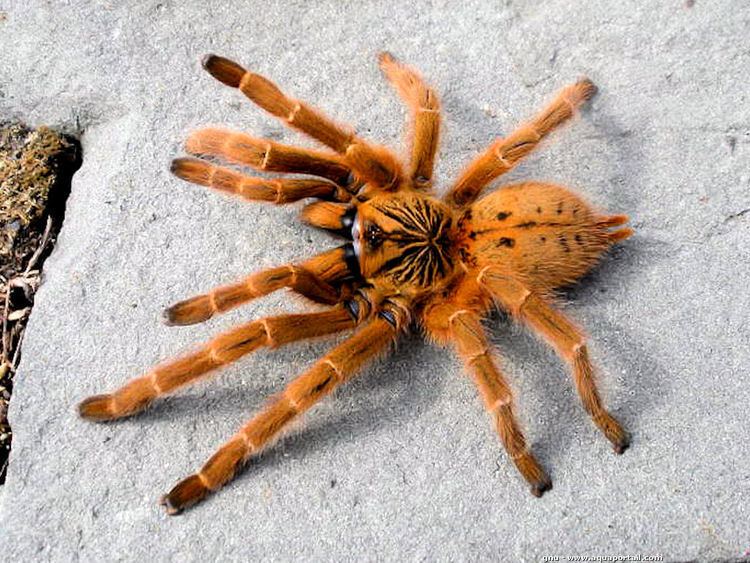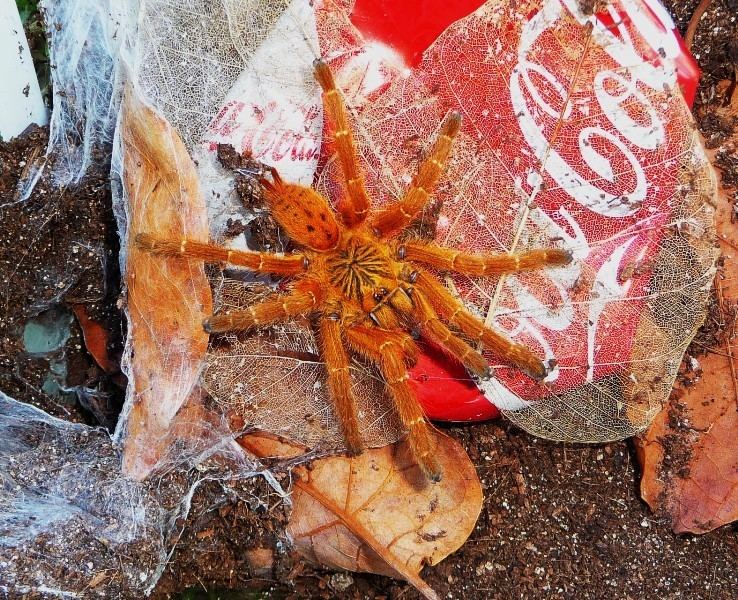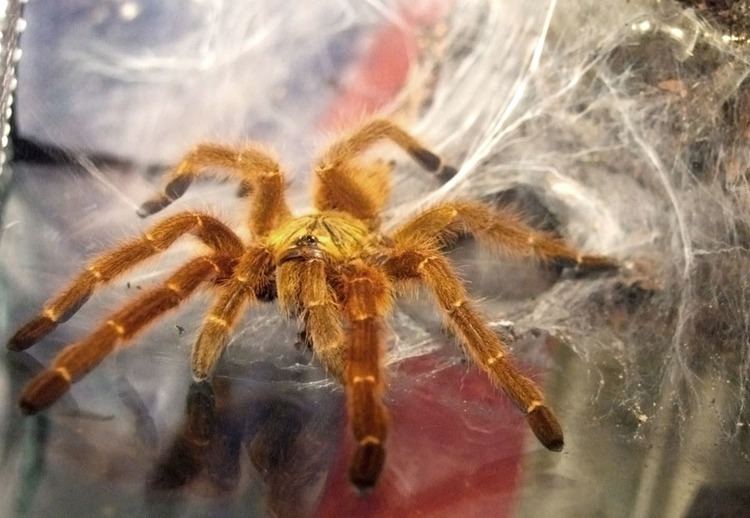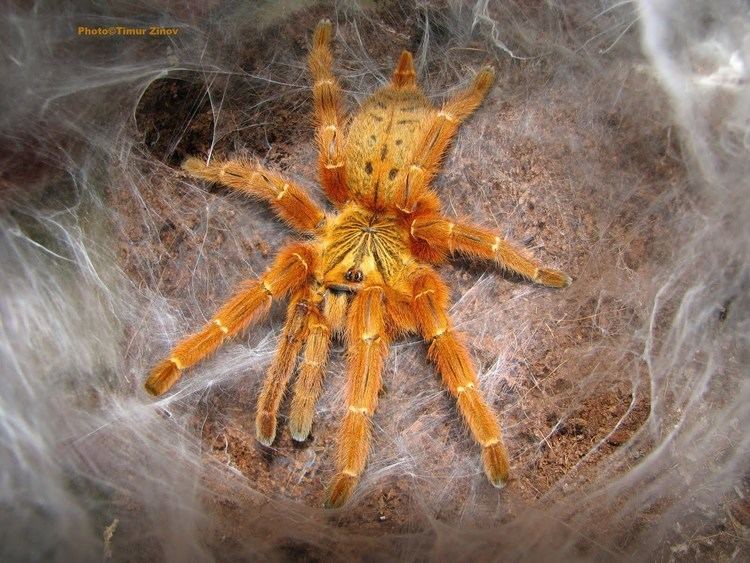Rank Species | Genus Pterinochilus Higher classification Pterinochilus | |
 | ||
Similar Pterinochilus, Tarantula, Greenbottle blue tarantula, Brazilian whiteknee tarantula, Venezuelan suntiger | ||
Tarantula feeding pterinochilus murinus obt orange baboon tarantula spiders n inverts 28
The baboon spider Pterinochilus murinus, an old-world tarantula, was first described in 1897 by Reginald Innes Pocock. This species is found on the African continent, in Angola, as well as central, eastern, and southern Africa.
Contents
- Tarantula feeding pterinochilus murinus obt orange baboon tarantula spiders n inverts 28
- Pterinochilus murinus bite report obt orange baboon tarantula orange bitey thing
- Description
- Distribution
- Behaviour
- As Pets
- References

Among those who keep tarantulas as pets Pterinochilus murinus is known as "OBT," which means "orange baboon tarantula" or "orange bitey thing" and also as the "pterror," a pun on its Latin genus classification: Pterinochilus. These nicknames reference a particular orange colour form that is prized in the hobby for its beauty and confrontational personality. It is also known as the Mombasa golden starburst tarantula.

This species is incredibly defensive and, as with most tarantulas, should not be held. The bite of this species, while not serious, is extremely painful. Moreover, the species is more than willing to inflict such a bite before presenting the typical threat display. Caution when dealing with this species is advised.

Pterinochilus murinus bite report obt orange baboon tarantula orange bitey thing
Description

Female P. murinus can grow to 4–6 inches in size (measured from the tip of the front left leg, to the rear right leg), while males typically range from 3–4 inches. The spider's abdomen, carapace, and legs have the same basic coloration, though the legs typically have brightly colored rings. The carapace has a star-shaped pattern, with a fishbone pattern present on the abdomen. The eyes are clustered together on a raised part of the carapace (in common with all tarantulas). The body is covered with short hairs, with longer hair present on the legs.
There are currently 4 known colour variants of Pterinochilus murinus:

TCF – typical colour form, UMV – Usambara Mountain variant, RCF – red colour form, DCF – dark colour form.

These colour variants are found in different geographical locations, and the colouration is thought to be related to the type of soil present where each variant lives.
Distribution
The orange baboon spider is found in Angola, as well as Central, Southern, and Eastern Africa. The species has also been recorded on the island of Zanzibar.
Behaviour
Like most old world tarantulas, the female orange baboon spider digs a burrow, or uses a burrow that has been abandoned. It lays silk threads on the entrance to feel vibrations from other animals. Also, it has lots of hairs on it that detect motion in the air. The orange baboon spider has no urticating hairs, and is very defensive. It also is not a good choice for people that are new to the Tarantula keeping hobby, and has a painful and venomous bite.
As Pets
These spiders are not common in pet stores but are very popular in the pet trade. They need a 5- to 10-gallon tank. These spiders build a tunnel shaped web and need 10 to 20 cm of bedding. Feed them crickets, cockroaches, and grasshoppers. Though they can kill small vertebrates (mice, small lizards, birds, snakes), overfeeding can cause a tarantula's organs to not develop properly, thus cutting short its life. It is not recommended that this species be fed beetles and beetle larvae (superworms, mealworms, etc.)
These spiders are attractive but are normally very defensive and have one of the worst bites of all tarantula species, having been known to have a bite more painful than that of a rattlesnake. Although their venom may not kill a human, it is advised to avoid handling this species.
